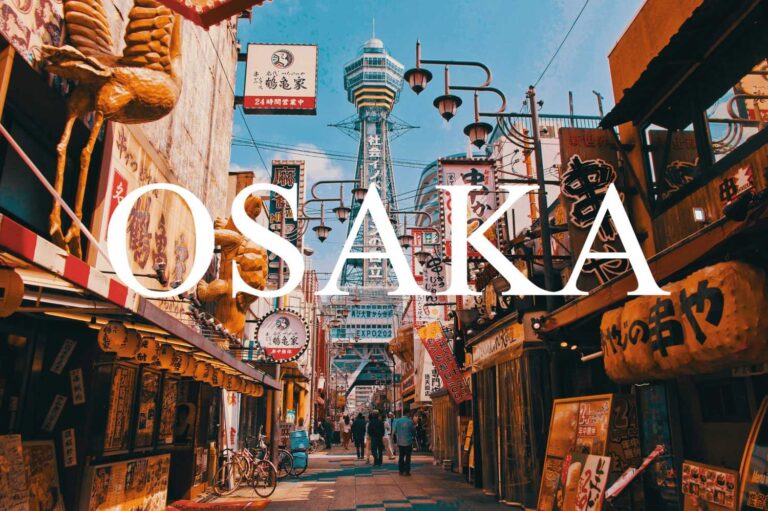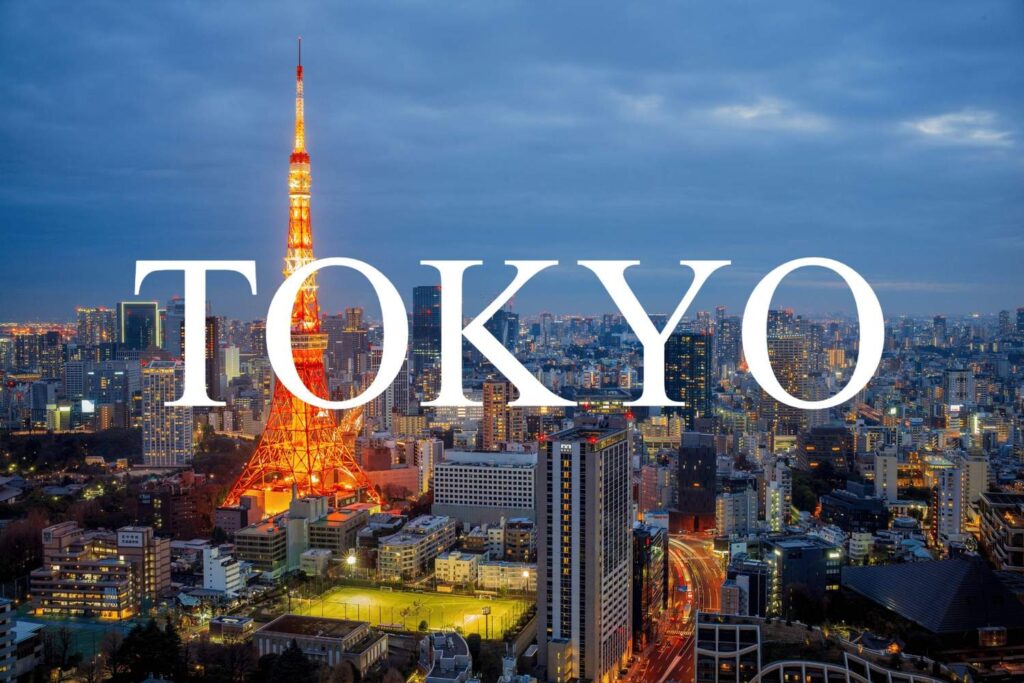
Tokyo, the vibrant capital of Japan, is a city like no other—a thrilling blend of innovation, tradition, and boundless energy. From its high-tech skyline and buzzing nightlife to its tranquil temples and centuries-old customs, Tokyo offers an unforgettable cultural experience that captures both the heart and the imagination.
Step into districts like Shinjuku and Shibuya, where towering skyscrapers, neon signs, and bustling crowds showcase the fast-paced rhythm of modern Japan. Here, fashion-forward locals, futuristic tech, and 24-hour entertainment create a dynamic urban playground. Yet just a few train stops away, serenity awaits in the historic quarters of Asakusa and Ueno, where you can visit ancient temples, stroll through peaceful gardens, or witness traditional ceremonies.
Tokyo is also a paradise for food lovers. From Michelin-starred sushi counters and steaming bowls of ramen to quirky themed cafés and lively izakayas, the city’s culinary scene is as diverse as it is delicious. Whether you’re grabbing a snack from a vending machine or savoring omakase in Ginza, every meal is a new adventure.
Culture pulses through every corner of Tokyo. Visit the majestic Meiji Shrine, explore the intricate art of ukiyo-e at the Sumida Hokusai Museum, or enjoy a live sumo match at Ryōgoku Kokugikan. And for pop culture enthusiasts, Akihabara’s anime shops and Harajuku’s colorful street style are must-sees.
Despite its immense size and fast pace, Tokyo is remarkably organized, clean, and welcoming. The city’s efficient public transport, deep-rooted etiquette, and warm hospitality make it easy for visitors to explore and feel at home.
Whether you’re drawn to high-tech marvels, traditional rituals, world-class cuisine, or unique neighborhoods, Tokyo promises a journey of discovery unlike anywhere else on Earth.
🗓️ Best Time to Visit Tokyo
- 🌸 March to May (Spring): Famous for cherry blossoms, mild weather, and vibrant festivals.
- 🍁 September to November (Autumn): Crisp air, stunning fall foliage, and fewer tourists.
- ❄️ Winter (December to February): Cooler temperatures, clear skies, and beautiful illuminations.
- ☀️ Summer (June to August): Hot and humid with occasional rain, but lively summer festivals.
Tokyo’s distinct seasons make it a year-round destination depending on what you want to experience.
💵 Currency & Travel Essentials
- Currency: Japanese Yen (JPY, ¥)
- Language: Japanese (English widely spoken in tourist areas)
- Transportation: Efficient and punctual subway and train networks including the famous JR Yamanote Line, plus buses and taxis.
- Average Daily Budget:
- Budget: ¥5,000–8,000
- Mid-range: ¥10,000–20,000
- Luxury: ¥25,000+
🏙️ Best Places to Visit in Tokyo
Shibuya Crossing
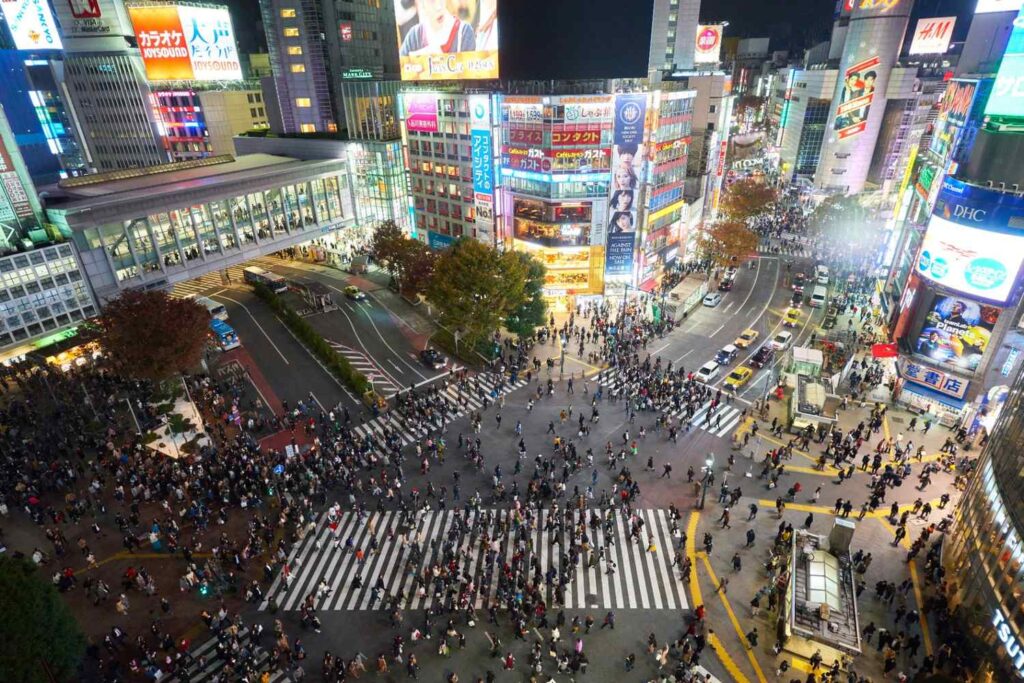
Photo by Timo Volz on Unsplash
Located in the bustling Shibuya district, Shibuya Crossing is one of the world’s busiest and most famous pedestrian intersections. Known for its dazzling neon lights, towering billboards, and the sea of people crossing from all directions, this spot perfectly captures Tokyo’s energetic urban vibe. Whether you’re a first-time visitor or a seasoned traveler, Shibuya Crossing is a must-see spectacle symbolizing the city’s vibrant pace and culture.
🌟 Highlights of Shibuya Crossing
• 👥 Massive Pedestrian Wave
Experience the thrilling moment when hundreds of pedestrians cross the intersection simultaneously from all directions.
• 💡 Bright Neon and Digital Billboards
Take in the stunning visuals of giant screens and colorful advertisements lighting up the surrounding buildings day and night.
• 📸 Photo and Video Hotspot
Capture iconic shots of the crossing from street level or nearby vantage points like the Shibuya Station Starbucks.
• 🛍️ Shopping and Entertainment
Explore nearby shopping centers, trendy boutiques, cafes, and entertainment venues that keep Shibuya buzzing.
• 🎉 Cultural Hub
Enjoy street performances, pop culture events, and the youthful energy that defines the area.
🚗 How to Get There
• By Public Transport:
Easily reachable via Shibuya Station, served by multiple JR lines, Tokyo Metro, and private railways.
🕒 Visitor Information
• Best Time to Visit:
Evenings for the full neon effect or during rush hours for the busiest crossing experience.
• Accessibility:
The crossing is open 24/7 and free to visit.
💡 Travel Tips
• 📷 Find a High Vantage Point:
For the best photos, head to the Starbucks or nearby buildings overlooking the crossing.
• 👟 Stay Alert:
Watch for traffic signals and stay safe while navigating the busy intersection.
• 🕰️ Visit at Night:
Experience the magical glow of lights when the crossing truly comes alive.
Shibuya Crossing is more than just a crosswalk—it’s a symbol of Tokyo’s dynamic spirit and urban energy. Whether watching the human tide from above or immersing yourself in the crowds below, this iconic spot offers a thrilling taste of Japan’s bustling city life.
Senso-ji Temple (Asakusa)
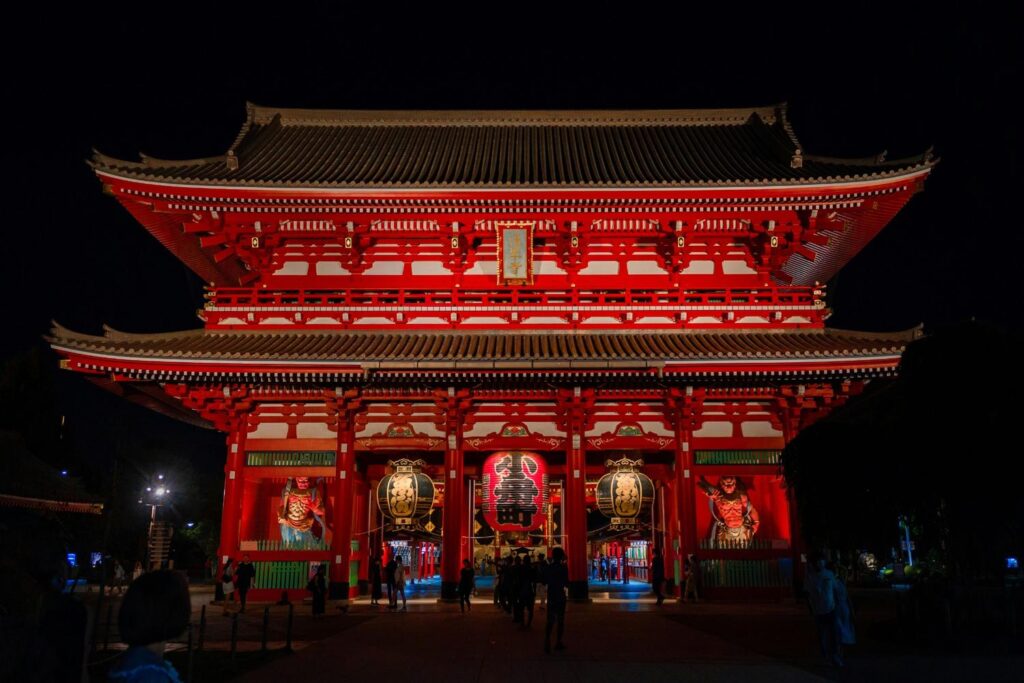
Photo by mos design on Unsplash
Located in the heart of Asakusa, Senso-ji Temple is Tokyo’s oldest and most famous Buddhist temple. With a history dating back over 1,300 years, this iconic site draws millions of visitors each year, offering a rich blend of spirituality, culture, and traditional Japanese charm.
🌟 Highlights of Senso-ji Temple
• 🔥 Kaminarimon (Thunder Gate)
The iconic entrance gate features a massive red lantern and statues of guardian deities, making it one of Tokyo’s most photographed landmarks.
• 🛍️ Nakamise Shopping Street
Leading up to the temple, this bustling street is lined with shops selling traditional snacks, souvenirs, and crafts—perfect for soaking up local culture.
• 🕯️ Main Hall and Pagoda
Explore the beautifully restored main hall for prayer and reflection, and admire the five-story pagoda nearby.
• 🎎 Cultural Festivals
Experience vibrant events like Sanja Matsuri, one of Tokyo’s biggest Shinto festivals held annually at Senso-ji.
• 🧧 Fortune Telling and Rituals
Try your luck with omikuji (fortune slips) and participate in cleansing rituals using incense smoke.
🚗 How to Get There
• By Public Transport:
Easily accessible via Asakusa Station, served by the Tokyo Metro Ginza Line, Toei Asakusa Line, and Tobu Skytree Line.
• On Foot:
The temple is within walking distance from other historic sites in Asakusa, including Sumida Park and the Tokyo Skytree.
🕒 Visitor Information
• Opening Hours:
The temple grounds are open 24 hours; main hall hours are typically from 6:00 AM to 5:00 PM.
• Admission:
Free to enter the temple grounds and Nakamise Street; some special exhibitions or events may have fees.
• Best Time to Visit:
Early mornings or weekdays to avoid crowds; spring for cherry blossoms and autumn for colorful foliage.
💡 Travel Tips
• 👟 Wear Comfortable Shoes:
Expect to walk and stand while exploring the temple complex and shopping street.
• 📸 Respect Cultural Etiquette:
Photography is welcome, but be mindful of worshippers and sacred spaces.
• 🕰️ Plan Around Festivals:
If visiting during Sanja Matsuri or other events, arrive early and prepare for large crowds.
Senso-ji Temple is a must-visit for anyone wanting to experience Tokyo’s deep-rooted traditions and vibrant atmosphere. Whether exploring its historic gates, shopping along Nakamise Street, or participating in spiritual rituals, Senso-ji offers a timeless journey into Japan’s cultural heart.
Tokyo Tower
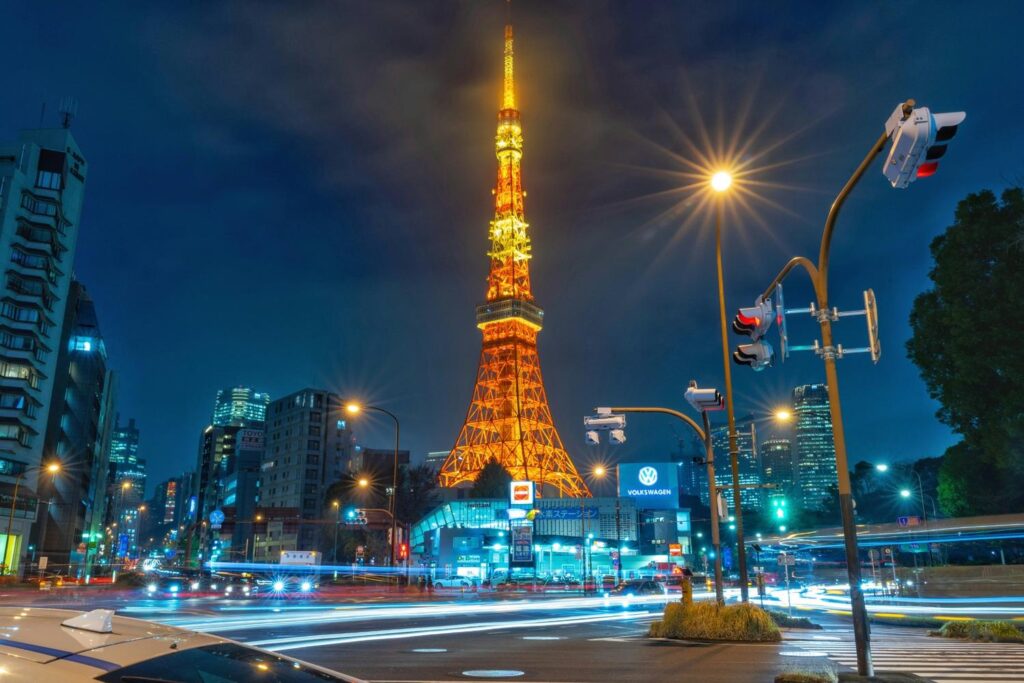
Photo by Shawn Tung on Unsplash
Rising majestically above the city, Tokyo Tower is a beloved symbol of Japan’s post-war rebirth and modern spirit. Inspired by the Eiffel Tower, this striking 333-meter tall structure offers spectacular panoramic views of Tokyo’s sprawling metropolis. Whether you visit to soak in the vistas, explore its entertainment complex, or admire its vibrant lighting, Tokyo Tower is a must-visit attraction blending history, culture, and fun.
🌟 Highlights of Tokyo Tower
• 👀 Observation Decks
Take in breathtaking 360-degree views from the Main Deck (150m) and the Top Deck (250m), where you can spot landmarks from Mount Fuji to Tokyo Skytree.
• 💡 Illuminations
Enjoy dazzling light displays that change with the seasons and special events, creating a magical nighttime atmosphere.
• 🏛️ FootTown Entertainment Complex
Explore the base’s multi-level complex featuring museums, shops, restaurants, and an aquarium.
• 🎉 Cultural and Seasonal Events
Experience festivals, exhibitions, and themed events held throughout the year.
• 📸 Photo Opportunities
Capture the tower’s iconic red-and-white lattice structure from nearby parks and streets.
🚗 How to Get There
• By Public Transport:
Accessible via Akabanebashi Station (Toei Oedo Line), Kamiyacho Station (Tokyo Metro Hibiya Line), or Onarimon Station (Toei Mita Line).
• By Taxi or Car:
Convenient drop-off points and parking are available around the tower.
🕒 Visitor Information
• Opening Hours:
Observation decks open daily, typically from 9 AM to 11 PM.
• Admission Fees:
Separate tickets for Main Deck and Top Deck; discounts available for children and seniors.
💡 Travel Tips
• 🎟️ Buy Tickets Online:
Avoid long lines by purchasing admission in advance.
• 📷 Visit at Sunset or Night:
See Tokyo’s skyline transition from day to glittering night lights.
• 🕰️ Combine with Nearby Attractions:
Explore Zojoji Temple and Shiba Park, located just steps away.
Tokyo Tower stands as a vibrant beacon of Tokyo’s energy and culture. Whether enjoying sweeping city views or exploring its lively base, a visit to this iconic tower promises unforgettable moments and a true taste of Japan’s capital.
Meiji Shrine
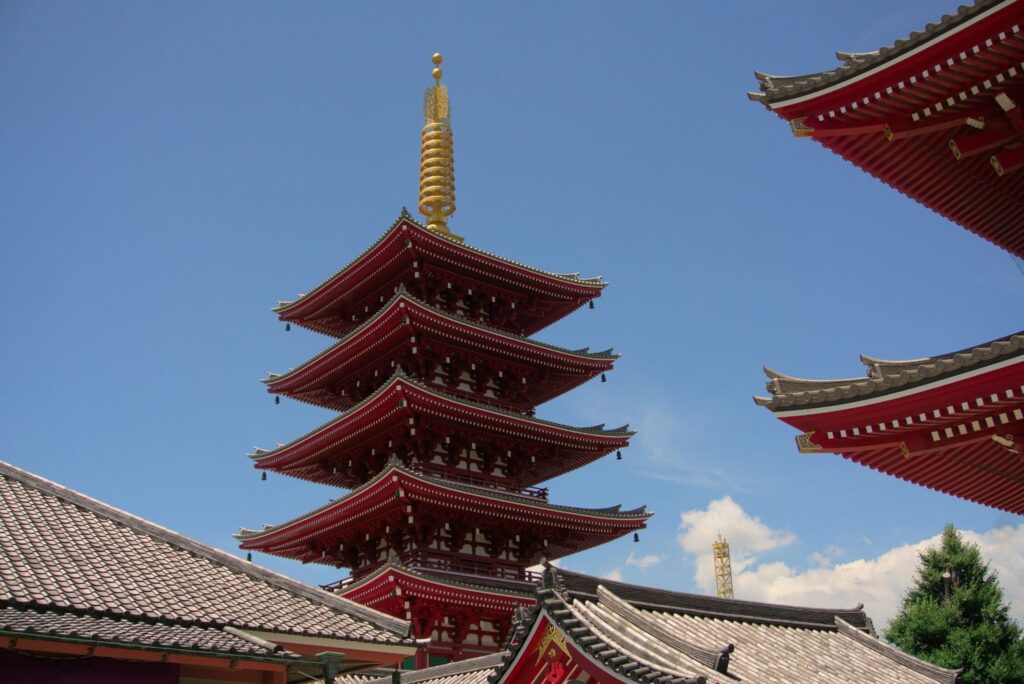
Photo by Aniket Hande on Unsplash
Nestled beside the bustling streets of Harajuku and Shibuya, Meiji Shrine (Meiji Jingu) is a peaceful Shinto sanctuary dedicated to Emperor Meiji and Empress Shoken. Surrounded by a lush forest, this shrine offers visitors a tranquil escape and a glimpse into Japan’s imperial history and spiritual traditions.
🌟 Highlights of Meiji Shrine
• 🌲 Enchanting Forest Walkways
Stroll along wide gravel paths through a 170-acre forest, featuring over 100,000 trees donated from across Japan.
• 🛐 Main Shrine Buildings
Visit the elegant wooden main hall (honden) for prayer and witness traditional Shinto architecture.
• 🍶 Sake Barrels and Treasure House
View decorative sake barrels offered as a symbol of prosperity, and explore the Treasure Museum showcasing Emperor Meiji’s personal artifacts.
• 🎎 Traditional Ceremonies
Catch glimpses of Shinto weddings, seasonal festivals, and rituals held throughout the year.
• 🕊️ Wishing for Good Fortune
Write your wishes on wooden plaques (ema) or try your luck with omikuji fortune slips.
🚗 How to Get There
• By Public Transport:
Easily reachable via Harajuku Station (JR Yamanote Line) or Meiji-jingumae Station (Tokyo Metro Chiyoda and Fukutoshin Lines).
• On Foot:
A short, pleasant walk from the vibrant Takeshita Street shopping area.
🕒 Visitor Information
• Opening Hours:
Open daily from 5:00 AM to 6:00 PM (hours vary slightly by season).
• Admission:
Free entry to the shrine grounds and main buildings.
• Best Time to Visit:
Early morning or late afternoon for a quiet, reflective experience; spring for cherry blossoms and autumn for colorful foliage.
💡 Travel Tips
• 👟 Comfortable Footwear Recommended:
Explore the spacious grounds and forest trails comfortably.
• 📸 Photography Etiquette:
Photos are allowed in most areas, but avoid taking pictures during ceremonies or inside the main hall.
• 🕰️ Visit During Festivals:
Experience vibrant cultural events like the New Year celebrations (Hatsumode) or autumn festivals.
Meiji Shrine offers a beautiful blend of nature, history, and spirituality in one of Tokyo’s most accessible locations. Whether seeking quiet reflection, cultural insight, or a peaceful walk through ancient woods, this shrine is a must-visit gem that captures the heart of Japan’s heritage.
Tsukiji Outer Market
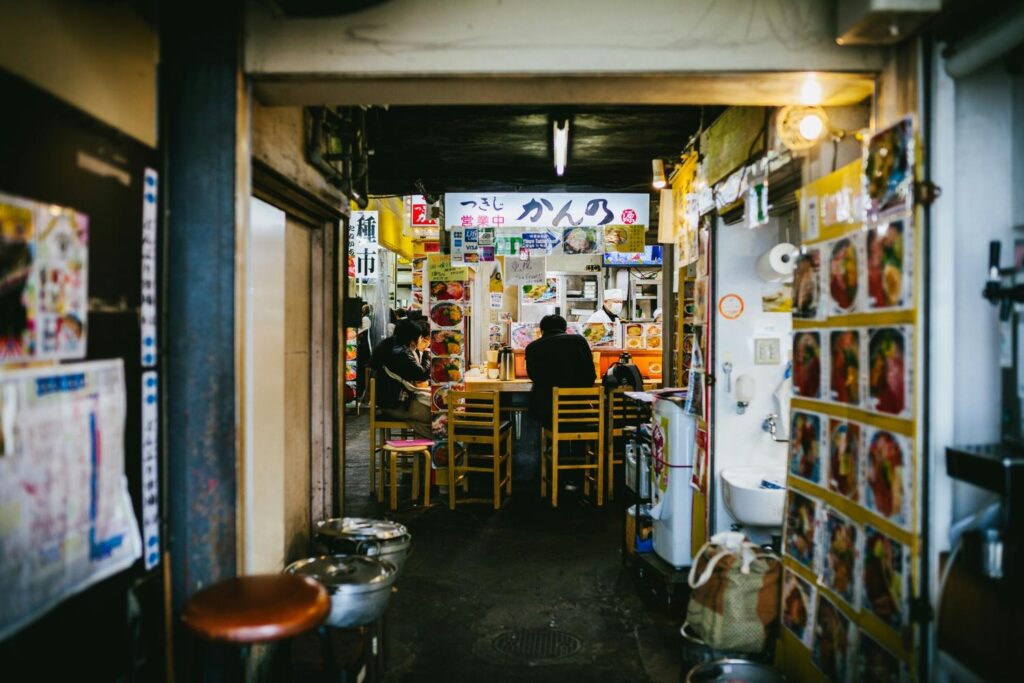
Photo by Karsten Gohm on Unsplash
Just steps away from the famed former inner Tsukiji Fish Market, the Tsukiji Outer Market is a bustling hub where locals and tourists alike gather to savor fresh seafood, street snacks, and traditional Japanese ingredients. This lively market offers an authentic taste of Tokyo’s culinary culture, with dozens of shops and eateries serving everything from sushi and sashimi to unique kitchenware and spices.
🌟 Highlights of Tsukiji Outer Market
• 🐟 Fresh Seafood and Sushi
Enjoy some of the freshest sushi in Tokyo at popular stalls and small restaurants, where chefs prepare dishes right before your eyes.
• 🍡 Traditional Japanese Street Food
Sample grilled seafood, tamagoyaki (Japanese omelette), mochi, and other local delicacies while strolling through the market lanes.
• 🛍️ Specialty Shops
Browse stores selling knives, dried seafood, seaweed, spices, and other cooking essentials favored by professional chefs.
• 🎏 Lively Atmosphere
Experience the energetic vibe of a traditional Japanese market bustling with friendly vendors and eager foodies.
• 🎁 Unique Souvenirs
Find authentic Japanese kitchen tools and gourmet treats perfect for gifts or your own culinary adventures.
🚶 How to Get There
• By Public Transport:
Accessible via Tsukiji Station (Toei Oedo Line) or Shintomicho Station (Tokyo Metro Yurakucho Line).
• On Foot:
Conveniently located near Ginza and the Tokyo Bay area, ideal for exploring on foot.
🕒 Visitor Information
• Opening Hours:
Most shops and eateries open early morning until early afternoon, typically closing by 2 PM.
• Best Time to Visit:
Mornings are the best time for freshness and to avoid the busiest crowds.
💡 Travel Tips
• 👟 Wear Comfortable Shoes:
The market involves walking on narrow lanes and standing while sampling food.
• 📷 Bring a Camera:
Capture colorful stalls, fresh seafood displays, and lively market scenes.
• 🕰️ Arrive Early:
Beat the crowds and enjoy the freshest offerings.
The Tsukiji Outer Market is a must-visit for anyone wanting to experience Tokyo’s culinary heart firsthand. From delectable seafood to vibrant market life, it’s a feast for the senses that showcases the best of Japanese food culture.
Akihabara
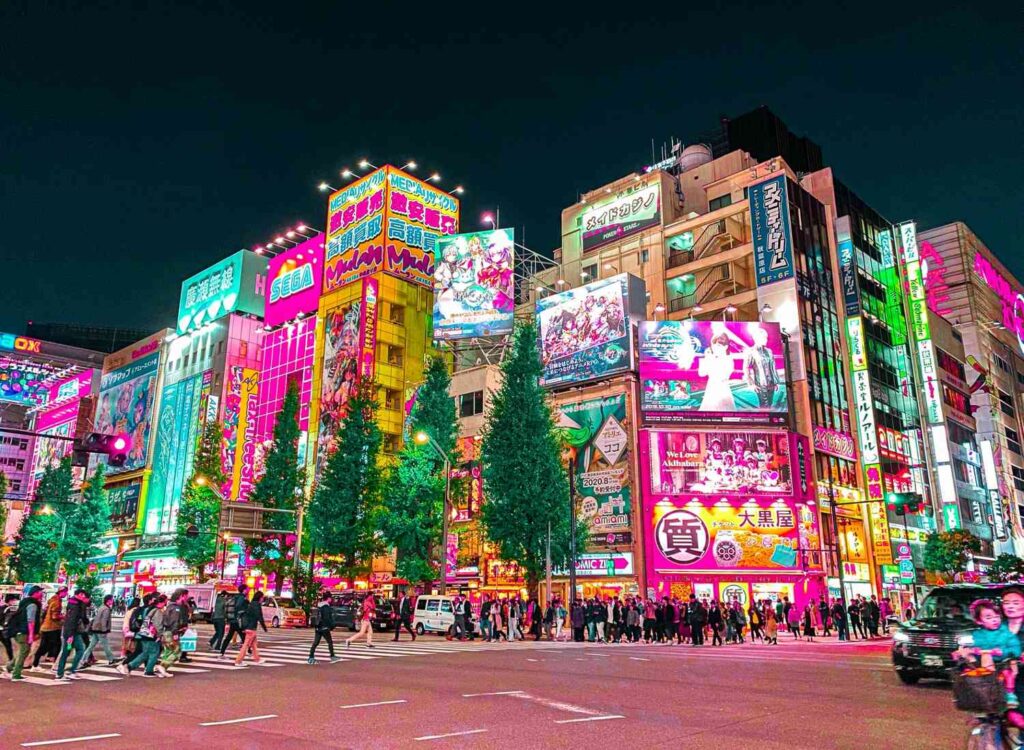
Photo by Jezael Melgoza on Unsplash
Known as the “Electric Town,” Akihabara is Tokyo’s vibrant district for cutting-edge electronics, anime, manga, and gaming culture. This lively neighborhood draws tech enthusiasts, pop culture fans, and curious travelers looking to dive into Japan’s unique modern culture.
🌟 Highlights of Akihabara
• 🎮 Electronics and Gadgets Galore
From the latest smartphones and computers to rare electronic components, Akihabara offers endless shopping options in sprawling multi-story stores.
• 📚 Anime, Manga & Collectibles
Explore countless shops selling anime DVDs, manga books, action figures, cosplay costumes, and rare collectibles.
• 🕹️ Arcades and Gaming Centers
Experience classic and new arcade games at bustling gaming centers, perfect for all ages.
• 🍰 Themed Cafés
Visit unique maid cafés, animal cafés, and other themed spots that offer fun, immersive experiences.
• 🛍️ Vintage and Secondhand Shops
Discover retro video games, vintage electronics, and rare items in specialty stores.
🚗 How to Get There
• By Train:
Akihabara Station is served by JR Yamanote Line, Keihin-Tohoku Line, and Tokyo Metro Hibiya Line, making it easy to access from anywhere in Tokyo.
🕒 Visitor Information
• Opening Hours:
Most shops open around 10:00 AM and close by 8:00 PM, though arcades and cafés may stay open later.
• Best Time to Visit:
Weekdays are less crowded; evenings and weekends buzz with energy and events.
💡 Travel Tips
• 👟 Wear Comfortable Shoes:
Akihabara’s streets are packed with shops to explore, so prepare for lots of walking.
• 💳 Cash is King:
While many stores accept cards, smaller shops and cafés may prefer cash.
• 📸 Respect Privacy:
Be mindful when taking photos inside shops or cafés, especially themed cafés where privacy is important.
Akihabara is a must-visit for anyone interested in Japan’s pop culture, tech innovations, and quirky entertainment. Whether hunting for the latest gadgets, indulging in anime fandom, or enjoying a themed café, Akihabara promises a vibrant, unforgettable Tokyo experience.
Ueno Park
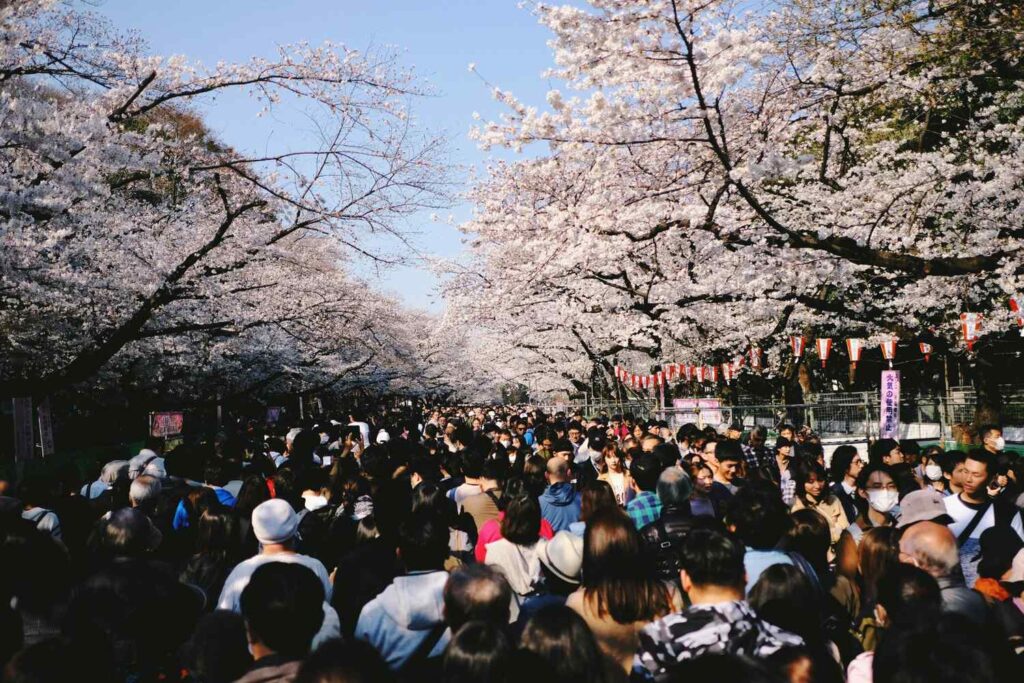
Photo by Trevor Paxton on Unsplash
Located in the heart of Tokyo, Ueno Park is a sprawling green space that offers a refreshing escape from the city’s hustle and bustle. Famous for its cherry blossoms, cultural institutions, and serene ponds, this beloved park is a favorite spot for locals and visitors alike seeking nature, art, and relaxation all in one place.
🌟 Highlights of Ueno Park
• 🌸 Cherry Blossoms in Spring
Witness breathtaking sakura (cherry blossom) displays that transform the park into a dreamy pink wonderland each spring.
• 🖼️ World-Class Museums
Explore the Tokyo National Museum, Ueno Royal Museum, and National Museum of Western Art, all located within the park’s grounds.
• 🦉 Ueno Zoo
Visit Japan’s oldest zoo, home to pandas, tigers, and many other fascinating animals.
• 🚣 Shinobazu Pond
Enjoy boating on the scenic pond surrounded by lotus flowers and peaceful pathways.
• 🎶 Seasonal Events and Festivals
Experience cultural events, outdoor concerts, and seasonal festivals throughout the year.
🚗 How to Get There
• By Public Transport:
Accessible via Ueno Station (JR lines and Tokyo Metro) and Keisei Ueno Station.
🕒 Visitor Information
• Opening Hours:
Parks and outdoor areas are open daily, while museums and zoo have specific opening times.
• Best Time to Visit:
Spring for cherry blossoms, autumn for colorful foliage, or any time to enjoy a relaxing day outdoors.
💡 Travel Tips
• 👟 Wear Comfortable Shoes:
The park is large and best explored on foot.
• 📷 Bring a Camera:
Capture the natural beauty, wildlife, and cultural landmarks.
• 🕰️ Plan for a Full Day:
With so much to see and do, allocate plenty of time to explore.
Ueno Park is a perfect blend of nature, culture, and family-friendly fun right in Tokyo’s urban core. Whether you’re marveling at cherry blossoms, admiring world-class art, or enjoying a leisurely boat ride, Ueno Park promises a memorable and refreshing experience.
Odaiba
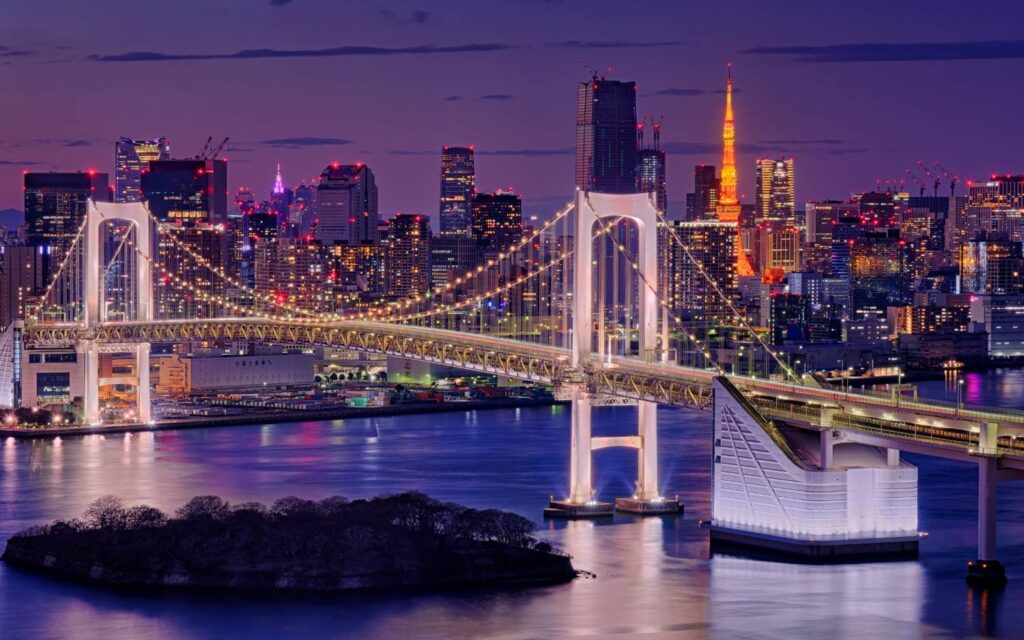
Photo by Takashi Miyazaki on Unsplash
Situated on a man-made island in Tokyo Bay, Odaiba is a futuristic entertainment and shopping district known for its stunning waterfront views, innovative attractions, and family-friendly activities. It’s a perfect blend of urban excitement and scenic relaxation, drawing locals and tourists alike.
🌟 Highlights of Odaiba
• 🏙️ Iconic Landmarks and Views
Marvel at the Rainbow Bridge, Statue of Liberty replica, and panoramic views of the Tokyo skyline and Tokyo Bay.
• 🛍️ Shopping and Dining
Explore massive malls like DiverCity Tokyo Plaza, Aqua City, and VenusFort, offering everything from international brands to themed restaurants.
• 🎢 Entertainment and Attractions
Enjoy teamLab Borderless digital art museum, LEGOLAND Discovery Center, and Odaiba’s giant Gundam statue.
• 🚤 Outdoor Activities
Stroll along the seaside promenade, visit the Odaiba Marine Park beach, or take a relaxing boat cruise.
• 🎆 Seasonal Events and Light Shows
Odaiba hosts spectacular fireworks, illumination displays, and festivals throughout the year.
🚗 How to Get There
• By Train:
Accessible via the Yurikamome Line from Shimbashi Station or Rinkai Line from Osaki Station, both offering scenic routes.
• By Car or Taxi:
Well-connected by bridges and roads, with ample parking near major attractions.
🕒 Visitor Information
• Opening Hours:
Most shopping centers and attractions operate between 10:00 AM and 9:00 PM.
• Best Time to Visit:
Spring and autumn offer pleasant weather and clear views; evenings are perfect for illuminated cityscapes.
💡 Travel Tips
• 👟 Comfortable Footwear:
Odaiba is vast with many spots to explore on foot.
• 📸 Bring Your Camera:
Capture breathtaking skyline views, futuristic art, and vibrant shopping scenes.
• 🕰️ Plan Your Day:
Allocate enough time to enjoy multiple attractions without rushing.
Odaiba is a must-see destination for experiencing Tokyo’s innovative spirit and scenic beauty. Whether you’re shopping, dining, exploring digital art, or simply soaking in the bay views, Odaiba offers a dynamic and memorable urban adventure.
Ginza
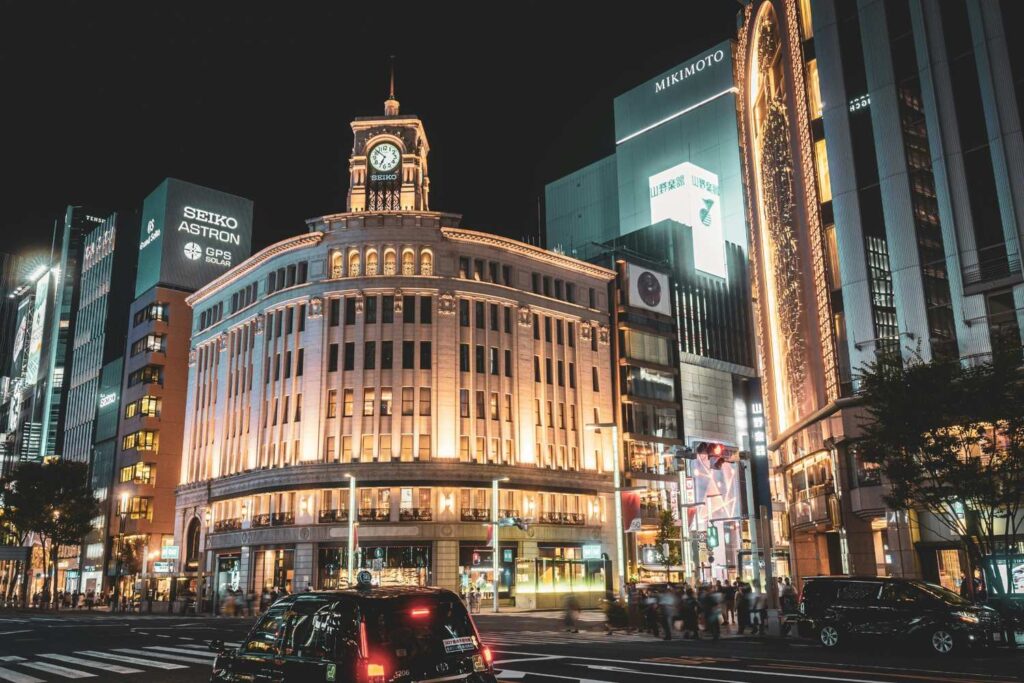
Photo by S. Tsuchiya on Unsplash
Ginza is Tokyo’s dazzling hotspot for luxury shopping, fine dining, and vibrant nightlife. Known for its elegant streets lined with flagship stores, high-end boutiques, and stylish cafes, Ginza offers a sophisticated urban experience that blends tradition with modern flair. Whether you’re hunting for designer brands or savoring exquisite cuisine, Ginza is the place to be for a taste of Tokyo’s upscale lifestyle.
🌟 Highlights of Ginza
• 🛒 Luxury Shopping
Explore world-renowned brands, chic boutiques, and department stores like Mitsukoshi and Ginza Six.
• 🍣 Gourmet Dining
Indulge in top-tier sushi bars, international restaurants, and cozy cafés offering culinary delights.
• 🎭 Theater and Entertainment
Catch a performance at the historic Kabuki-za Theatre or enjoy live music and art galleries.
• ✨ Stunning Architecture
Marvel at modern architectural masterpieces alongside classic buildings, creating a unique cityscape.
• 🎉 Seasonal Events and Illuminations
Experience festive light displays and cultural events that bring extra sparkle to the streets.
🚗 How to Get There
• By Public Transport:
Accessible via Ginza Station (Tokyo Metro Ginza, Marunouchi, and Hibiya Lines) and nearby subway stations.
🕒 Visitor Information
• Opening Hours:
Shops and restaurants typically open from late morning until evening, with some venues open late.
• Best Time to Visit:
Evenings for illuminated streets or weekends for lively crowds and events.
💡 Travel Tips
• 👟 Wear Comfortable Shoes:
Stroll the district’s wide sidewalks and explore multiple shopping complexes.
• 📷 Bring a Camera:
Capture the vibrant street scenes and striking architecture.
• 🕰️ Plan for Shopping and Dining:
Allow time to browse and enjoy meals at some of Tokyo’s finest establishments.
Ginza is the epitome of Tokyo’s chic urban life—where luxury meets culture and every visit offers a blend of excitement and elegance. Whether you’re shopping for the latest fashions or savoring gourmet treats, Ginza delivers an unforgettable experience at the heart of Japan’s capital.
Imperial Palace & East Gardens
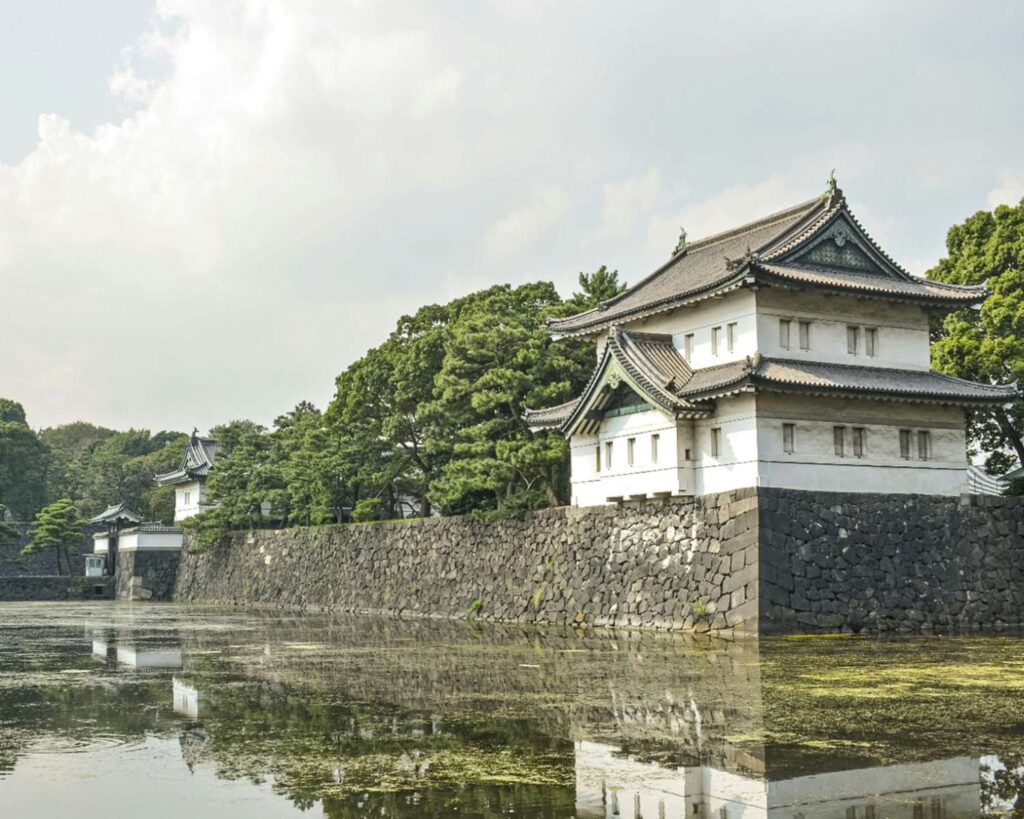
Photo by Douglas Lima on Unsplash
Located in the center of Tokyo, the Imperial Palace is the residence of Japan’s Emperor and a symbol of the nation’s rich heritage. Surrounding the palace, the East Gardens offer a peaceful, beautifully landscaped area open to the public, blending nature, history, and culture in the bustling city.
🌟 Highlights of Imperial Palace & East Gardens
• 🏰 The Imperial Palace Grounds
While the inner grounds are mostly closed to the public, visitors can admire the impressive outer moats, stone walls, and the iconic Nijubashi Bridge.
• 🌸 East Gardens (Higashi Gyoen)
These meticulously maintained gardens feature seasonal flowers, historic ruins, traditional Japanese landscaping, and peaceful walking paths.
• 🏯 Historical Structures
Explore remnants of Edo Castle, including walls, gates like the Otemon Gate, and guardhouses, offering insight into Tokyo’s feudal past.
• 🌳 Scenic Nature and Wildlife
Enjoy tranquil ponds, ancient trees, and a variety of bird species, providing a serene retreat in the city.
• 📸 Photography Opportunities
Capture stunning views of the palace architecture framed by gardens and the surrounding Tokyo skyline.
🚗 How to Get There
• By Public Transport:
Accessible via Tokyo Metro’s Otemachi Station and Takebashi Station, both within walking distance.
• On Foot:
A pleasant stroll from Marunouchi and Ginza districts.
🕒 Visitor Information
• Opening Hours:
East Gardens are open daily from 9:00 AM to 4:30 PM (closed Mondays and Fridays).
• Admission:
Free entry to the East Gardens; special guided tours of the palace grounds require advance reservation.
• Best Time to Visit:
Spring for cherry blossoms, autumn for colorful foliage, or any clear day for a peaceful walk.
💡 Travel Tips
• 👟 Wear Comfortable Shoes:
Prepare for walking on gravel paths and garden trails.
• 🕰️ Arrive Early:
To avoid crowds, especially during peak seasons like cherry blossom time.
• 📸 Respect the Rules:
Photography is allowed in the gardens, but avoid restricted areas.
The Imperial Palace and East Gardens offer a captivating blend of Japan’s imperial history, architectural grandeur, and natural beauty. Whether you’re exploring historic ruins, enjoying seasonal blooms, or simply soaking in the serene atmosphere, this site provides a memorable escape within Tokyo’s urban landscape.
📝 Local Travel Tips
- 🎟️ Get a Suica or Pasmo card: Rechargeable transport cards that make subway and bus travel smooth and cashless.
- 💡 Language: Learn basic Japanese phrases or use translation apps for easier communication.
- 🍽️ Food: Try local specialties like ramen, sushi, tempura, and street snacks in various neighborhoods.
- 📷 Etiquette: Always be respectful when photographing people or inside temples.
- 💰 Tipping: Not customary in Japan; excellent service is standard and included.
📌 Additional Information
- Safety: Tokyo is one of the safest major cities worldwide, with low crime rates.
- Connectivity: Free Wi-Fi is common in cafes, hotels, and public spaces, though portable Wi-Fi rental is recommended.
- Seasonal Events: Don’t miss cherry blossom festivals in spring or vibrant autumn leaf-viewing events.
- Cultural Norms: Bowing is a common greeting, and punctuality is highly valued.
✨ Final Thoughts
Tokyo dazzles with its unique harmony of the old and the new. Whether navigating the neon-lit streets of Shibuya, exploring serene shrines, or savoring world-class cuisine, Tokyo offers an immersive experience unlike any other city.
Prepare to be enchanted by a metropolis where tradition and technology coexist beautifully — Tokyo is ready to welcome you with open arms!✨

I’m Shreyash Mhashilkar, an IT professional who loves building user-friendly, scalable digital solutions. Outside of coding, I enjoy researching new places, learning about different cultures, and exploring how technology shapes the way we live and travel. I share my experiences and discoveries to help others explore new places, cultures, and ideas with curiosity and enthusiasm.


